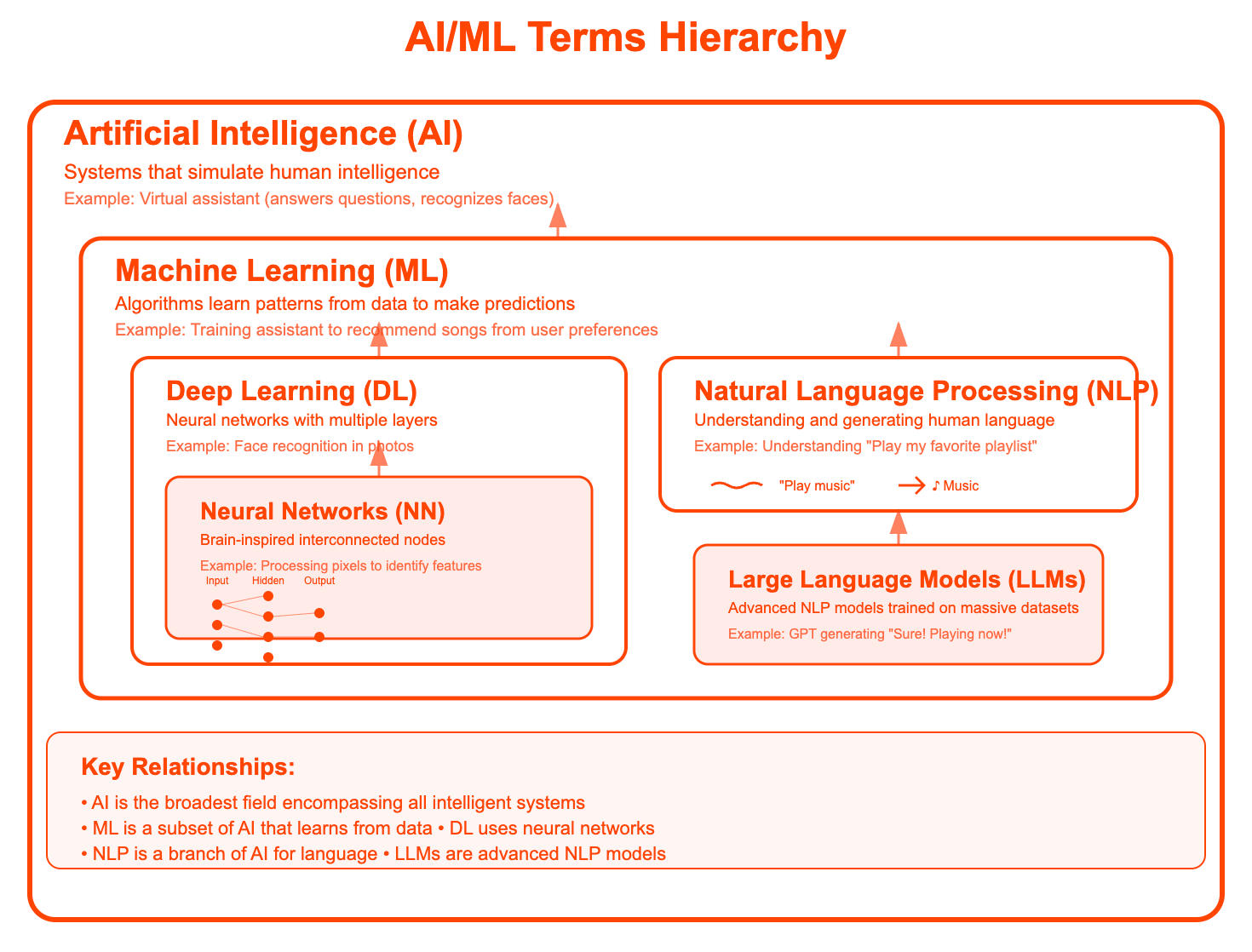AI/ML Terms Explained Simply - Part1
In today’s world, Artificial Intelligence (AI) is no longer just a futuristic concept, it’s here, integrated into our daily tools and workflows. AI refers to systems or machines that mimic human intelligence to perform tasks like understanding language, recognizing images, making decisions, or learning from data. It’s an umbrella term that includes various subfields such as machine learning, robotics, and natural language processing. Rather than being one specific technology, AI is a collection of methods designed to create intelligent behavior in machines.
One of the most impactful branches of AI is Machine Learning (ML). ML is all about enabling machines to learn patterns from data without being explicitly programmed for every possible scenario. Instead of hardcoding logic, we provide examples, and the model generalizes from those examples to make predictions. This learning improves over time as more relevant data becomes available. In practice, most of what we commonly refer to as “AI” today is machine learning in action.

To enable ML models to learn, we need data, the raw material that fuels the learning process. Data can take many forms, including text, images, audio, or numerical values. However, not all data is equally useful. Clean, well-structured data helps models learn accurately, while messy or irrelevant data can lead them astray. Data quality, therefore, becomes a cornerstone of successful machine learning projects.
In supervised learning, we pair that data with labels, these are the correct answers or outcomes the model is supposed to predict. For instance, if we’re building a sentiment analysis model, the label be “positive” or “negative” for each customer review. These labeled examples act as a training set, teaching the model what to expect. The clearer and more accurate the labels, the better the model can learn.
When labeled data isn’t available, we turn to unsupervised learning. In this approach, the model tries to find hidden patterns or groupings within the data on its own. A typical use case would be clustering users based on their behavior, even if we don’t have predefined categories. It’s more exploratory and less precise, but it’s incredibly valuable for discovering structure in large datasets.
There’s also reinforcement learning, where a model learns by interacting with an environment. It takes actions, receives feedback in the form of rewards or penalties, and adjusts its behavior accordingly. This trial-and-error approach is used in fields like robotics, game playing, and dynamic decision systems. While powerful, it also tends to be more complex to implement and tune.
At the heart of many advanced AI systems lies the neural network. Inspired by how the human brain works, neural networks are made up of interconnected layers of nodes, or “neurons,” that pass information through weighted connections. Each layer transforms the input a bit more, enabling the network to detect increasingly complex patterns. Neural networks are especially effective for recognizing images, processing audio, and understanding language.
When neural networks become deeper, meaning they have many layers, we enter the domain of Deep Learning. Deep learning models have revolutionized tasks like image recognition, speech processing, and machine translation. They excel at identifying intricate patterns in large datasets, but they require substantial computational resources and massive amounts of data to train effectively.
A major breakthrough in deep learning has been the development of Large Language Models (LLMs). These models, like GPT or BERT, are designed to process and generate human-like text. They’re built using transformer architectures and trained on enormous corpora of text data. LLMs can understand context, answer questions, write content, and even perform basic reasoning. They rely heavily on prompts, the input we provide to guide their response. The clarity and framing of the prompt can significantly shape the quality of the output, which is why prompt engineering has become such an essential skill when working with these models.
